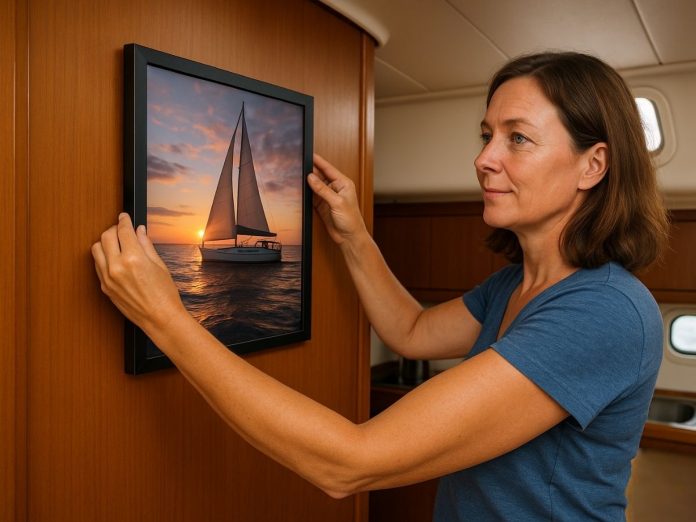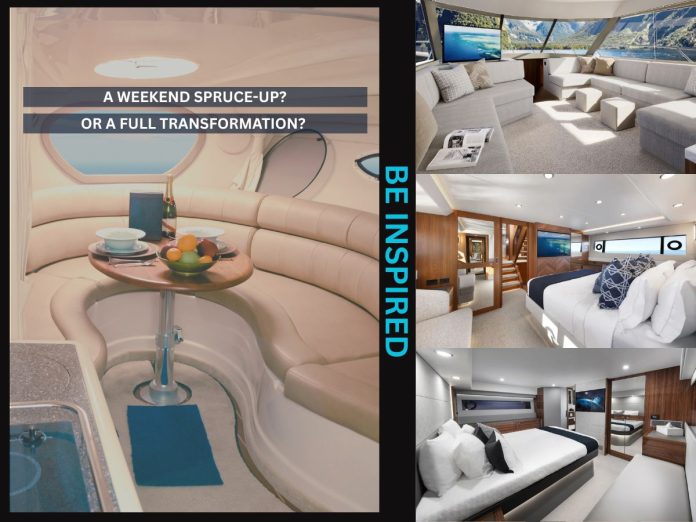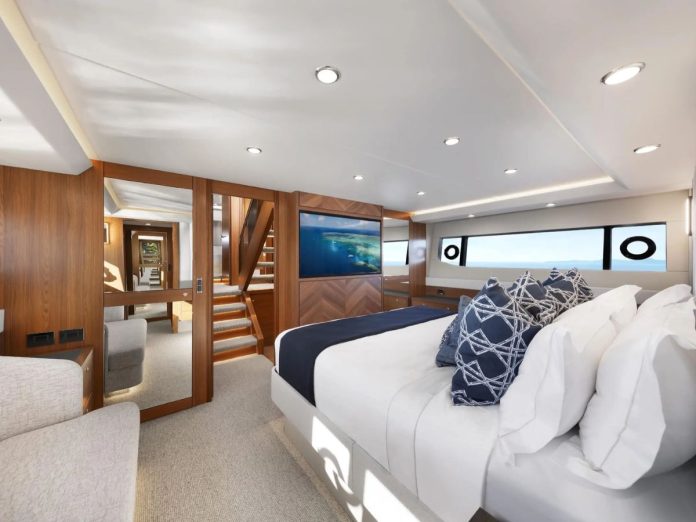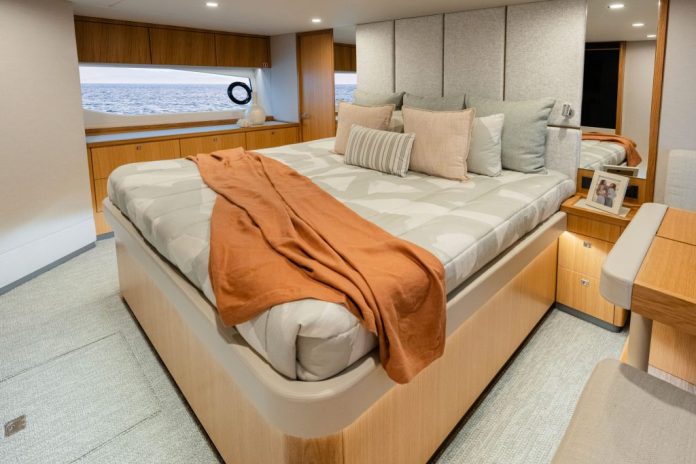A boat isn’t just something you own. It’s something you live in—sometimes for a weekend, sometimes for months at a time. So whether you spend time on a sleek motor yacht, a long-range cruiser, or a bluewater liveaboard, it makes sense—and feels right—to personalise your interior.
For many owners, it starts with cushion covers, throws, and bed linen—but it doesn’t have to stop there. Artwork adds that final touch, turning a floating space into something that feels truly your own.
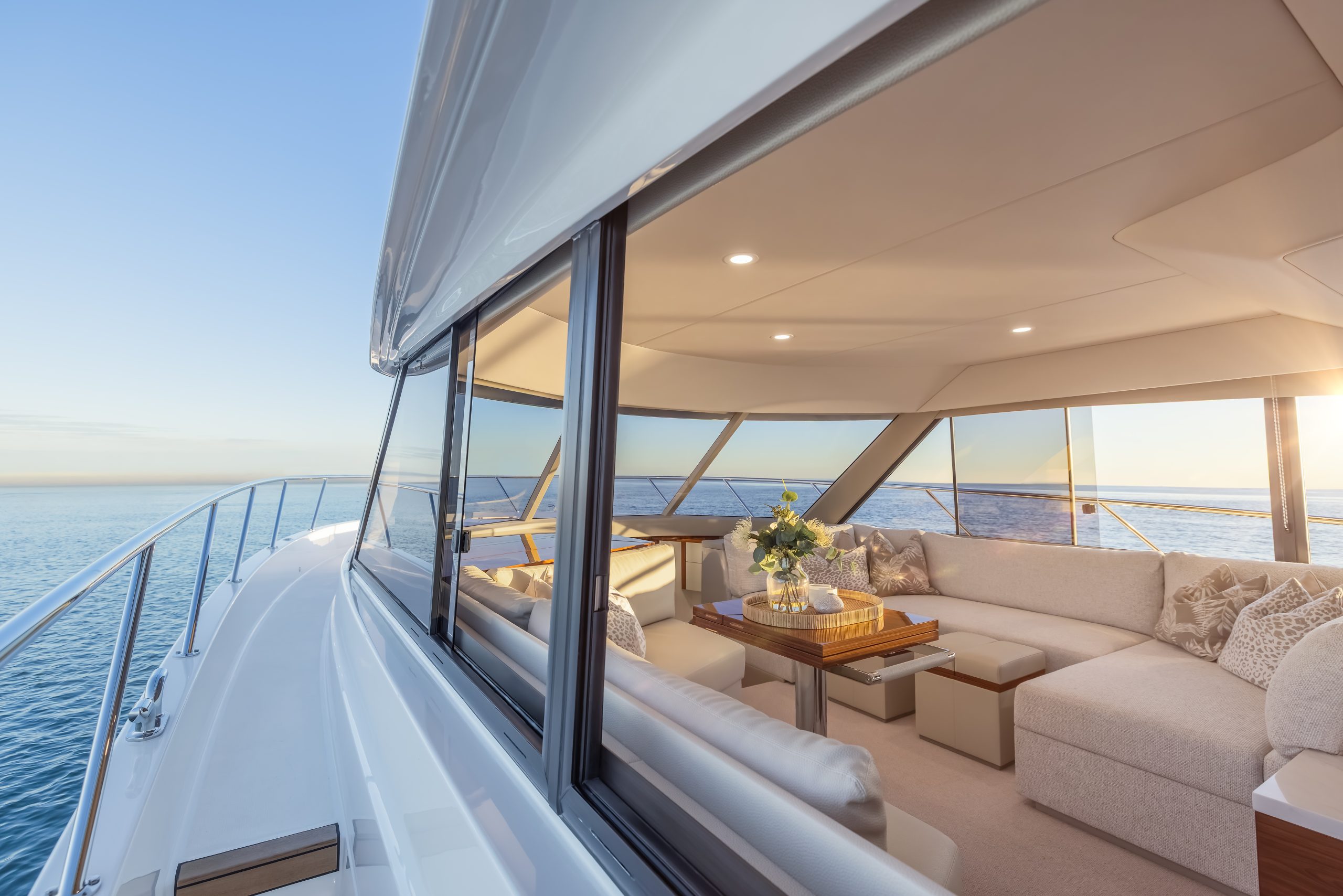
But unlike a house, a yacht moves. That means displaying art onboard is a bit more involved than just hanging a print on a hook. Fortunately, you don’t need a specialist art handler or a megayacht budget to do it right.
Drawing on insights from Niamh Brennan and Sonya Romeo—co-directors of The Textile & Design Studio and the creative team behind Maritimo’s luxury interiors—here’s an inspired yet practical guide to sourcing and hanging art on your boat.
“Artwork is the final layer that gives a yacht its soul.”
That’s how Brennan and Romeo see it. As co-directors of The Textile & Design Studio, they’ve helped shape the interiors of some of Australia’s most admired motor yachts. Their philosophy? Art isn’t just decoration. It’s identity.
“We use it to echo the owner’s story—whether that’s a single statement piece in the saloon or a quiet series in the staterooms—so every space feels personal rather than showroom-perfect.”
That applies equally to a $4 million cruiser or a smartly fitted $400,000 coastal explorer. A boat should feel like yours. Art helps make that happen.
Mount it right—or don’t mount it at all
On land, art only has to survive dust and the occasional slammed door—unless you have kids in the house, in which case it’s the occasional ball as well. At sea, it’s a different story. Swell, vibration, slamming—even gentle rocking—can dislodge unsecured objects, turning a framed photo into a flying hazard.
If you’re hanging a small, lightweight frame, the simplest solution is Velcro. Two self-adhesive strips—one on the wall, one on the frame—can keep most photos, canvas prints, and light artwork in place without damaging your interior.
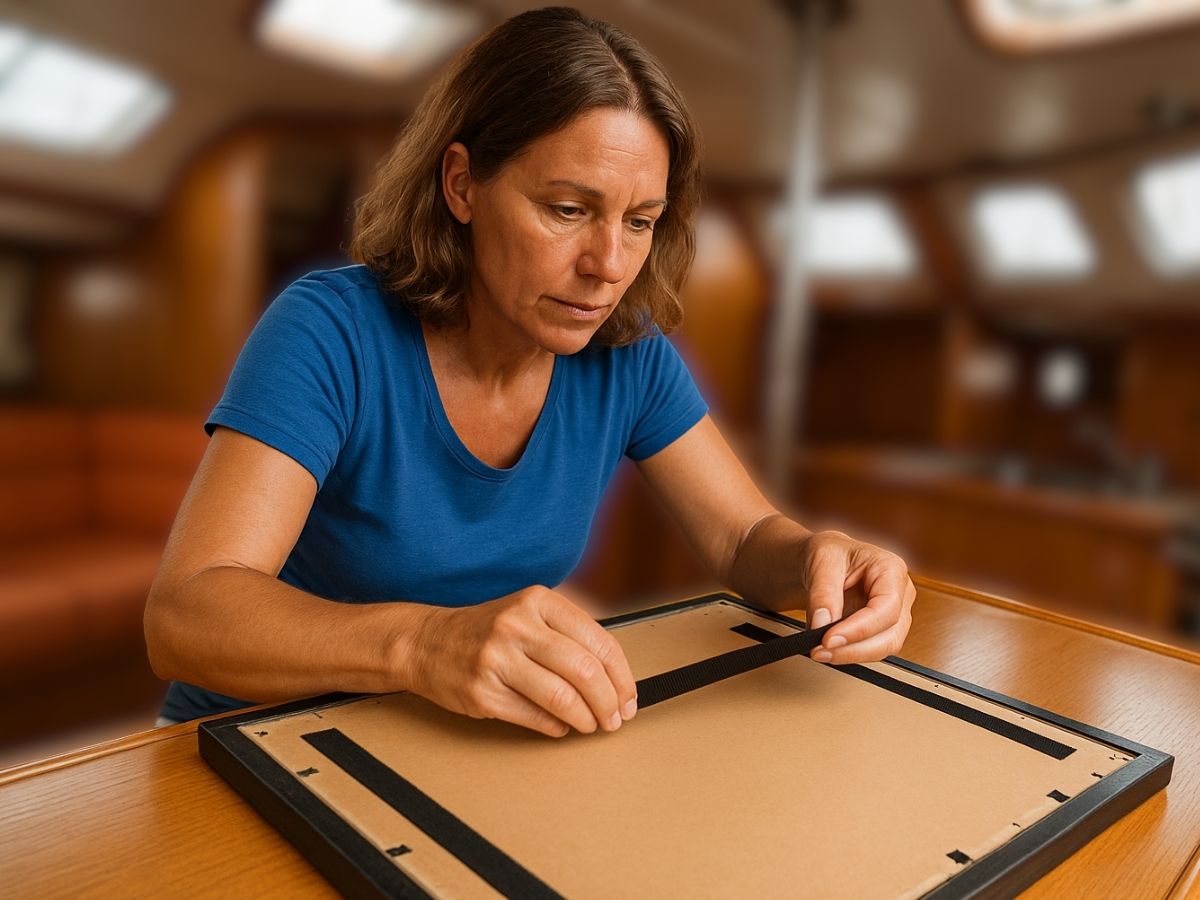
Heavier pieces like mirrors or substantial artwork will need to be screwed into the bulkhead. To minimise damage, some owners use a top-hinged frame with Velcro at the base. That way, it’s both secure and easily removed.
Brennan and Romeo favour solutions designed specifically for life at sea:
“The marine environment demands pragmatism: we favour lightweight substrates, non-glare glazing and vibration-proof framing systems that lock into place yet allow easy removal for service.”
It’s about safety, longevity—and the option to change things up later.
Think beyond the frame
Art on a boat doesn’t have to mean framed paintings. Increasingly, yacht designers are turning to softer, more sculptural options that bring texture and expression—without the risk of breakage.
“We’re seeing more sculptural textiles—hand-woven wall pieces, fibre art and even acoustic fabric panels—because they add depth without the fragility of glass or ceramics.”
Fibre art—made from natural or synthetic fibres like yarn, fabric, or thread—adds texture, absorbs sound, and is far more forgiving underway than glass-fronted prints. Bonus: it looks just as stunning, and often more personal.
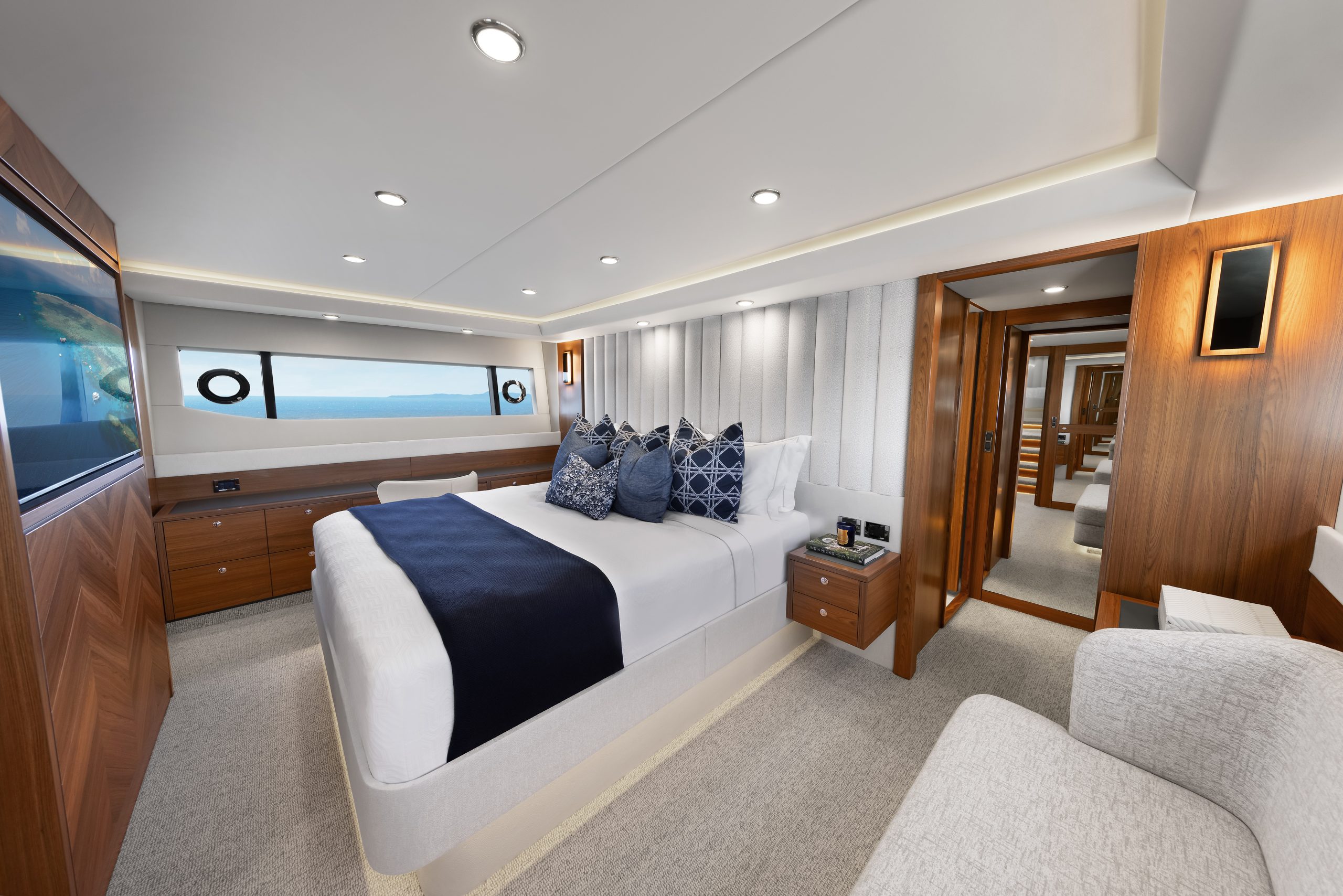
You can also incorporate artistic elements into panelling, cabinetry, or even ceiling design. During a refit or build, this is the perfect time to embed creative features that feel both bespoke and boat-safe.
Light it right
There’s an art to lighting art—and it’s not just about aesthetics. UV light, heat, and glare can damage artwork over time, especially delicate materials like watercolours and photography.

That’s why Brennan and Romeo integrate lighting into their design plan from the start:
“Warm LED strips or track lighting give art the warmth it deserves while keeping heat off canvases. When integrated into overhead pelmets, it also avoids clutter on already compact ceilings.”
Whether you’re retrofitting one piece or designing a whole interior, consider how the light hits it—natural or artificial—and make subtle lighting part of the picture.
Protecting art onboard: tips that work
You don’t need museum-grade security systems or climate control. But a few smart decisions can protect your investment—whether that’s a $200 print or a treasured family heirloom.
- Use non-glare glazing: It protects from UV damage and reduces reflections.
- Avoid mounting near vents or hatches: Moist air and sudden temperature shifts can warp artwork or cause mould.
- Go light unless you go pro: Heavy frames need professional installation with corrosion-resistant fittings.
- Keep an inventory: Photograph and document your pieces—especially if they’re insured.
- Rotate for freshness: Removable mounts make it easy to change the vibe each season.
“It has to inspire.”
Boats are small spaces. That means every detail matters—especially the ones you see every day. If a piece of art makes you pause, smile, or remember something important, it’s done its job. That mindset reflects how Brennan and Romeo approach yacht interiors. They don’t just place art for symmetry or colour. They place it with meaning—so it can elevate not just the space, but the experience of being onboard.
Whether you’re building a new yacht with an interior team or simply looking to bring a little more soul to your saloon, hang something that speaks to you.








